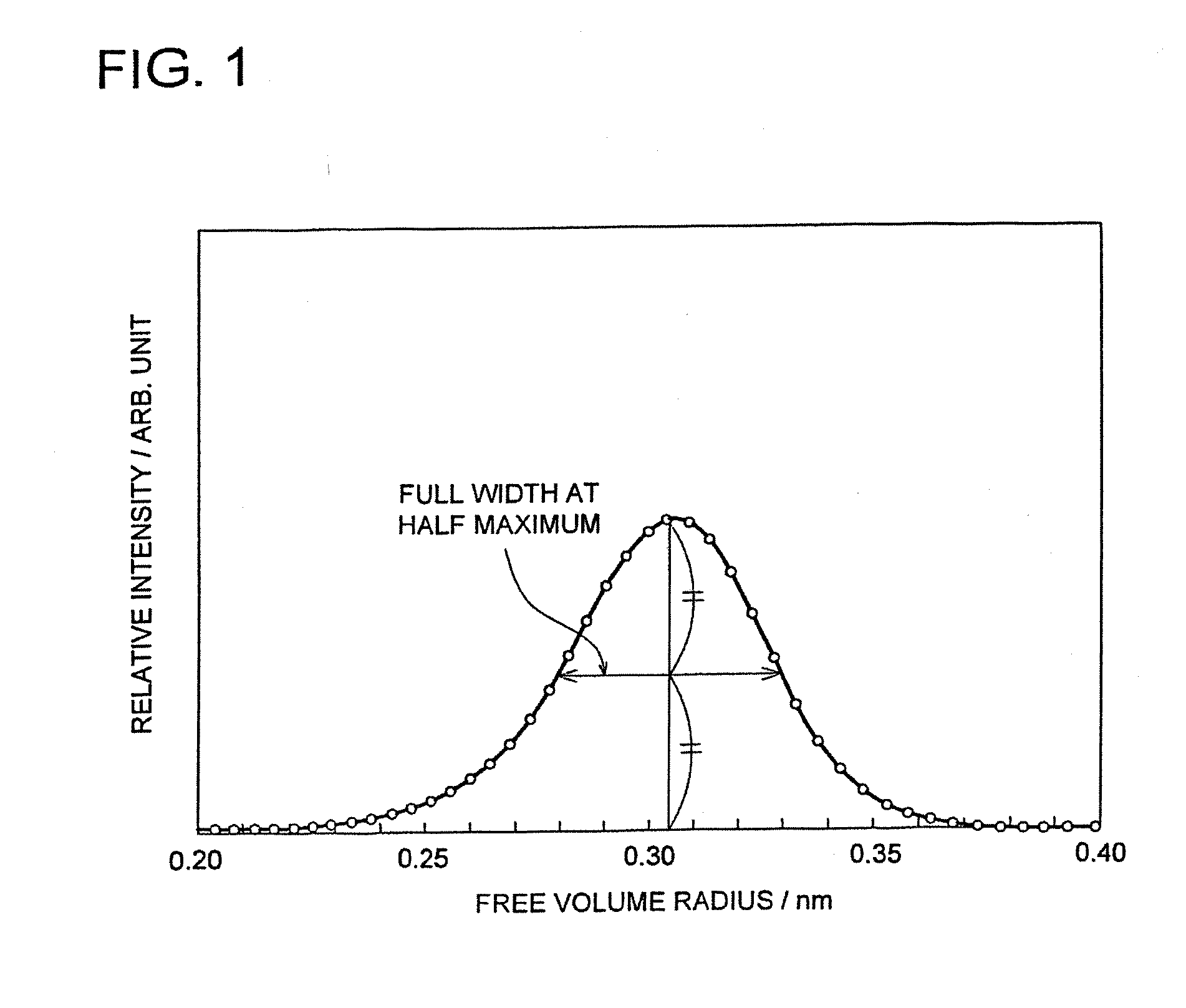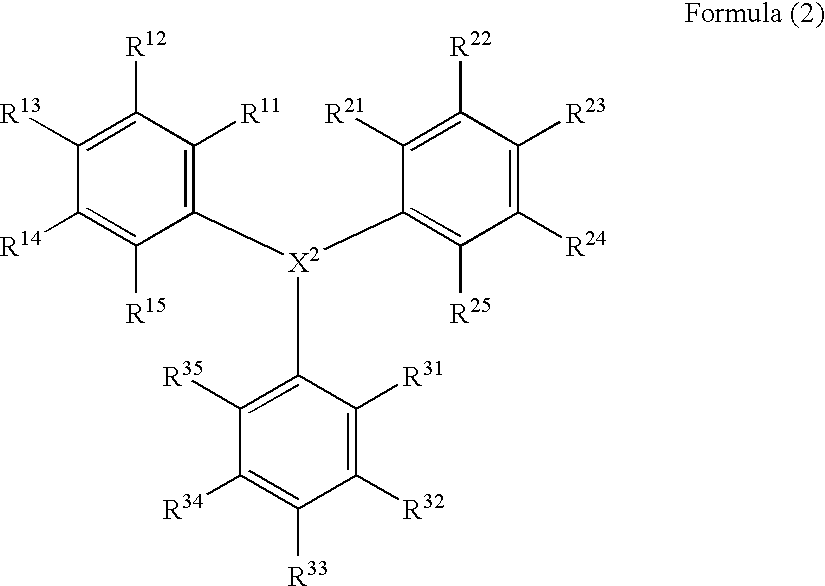Cellulose Ester Film, Polarizing Plate and Display
a technology of cellulose ester film and polarizing plate, which is applied in the direction of polarizing elements, instruments, non-linear optics, etc., can solve the problems of film rupture and other problems, and achieve the effect of reducing optical anisotropy and excellent visibility
- Summary
- Abstract
- Description
- Claims
- Application Information
AI Technical Summary
Benefits of technology
Problems solved by technology
Method used
Image
Examples
example 1
Synthesis of Polymer X
[0438]Charged into a glass flask equipped with a stirrer, two dripping funnels, a gas feeding tube, and a thermometer were 40 g of a mixture of Monomers Xa and Xb of the type and ratio described in Table 1, 2 g of mercaptopropionic acid as a chain transfer agent, and 30 g of toluene. The resulting mixture was heated to 90° C. Thereafter, the mixture of Monomers Xa and Xb of the type and ratio described in Table 1 was dripped over 3 hours from one dripping funnel, while 0.4 g of azobisisobutyronitrile dissolved in 14 g of toluene was simultaneously dripped from the other dripping funnel over 3 hours. Thereafter, 0.6 g of azobisisobutyronitrile, dissolved in 56 g of toluene, was dripped over 2 hours, and reaction was performed for an additional 2 hours, whereby Polymers X1-X5 were prepared. The weight average molecular weight of each of above Polymers X1-X5, as shown in Table 1, was determined employing the method described below. The polymers having different mo...
example 2
Preparation of Polarizing Plates
[0471]By employing each of Cellulose Ester Films 1-39, 39 polarizing plates were prepared. Subsequently, the degradation of the polarizer, the dimensional stability of the polarizing plate, and the curling of the polarizing plate were evaluated.
[0472]A 120 μm thick polyvinyl alcohol film was immersed into 100 kg of an aqueous solution incorporating 1 kg of iodine and 4 kg of boric acid, and then stretched at a factor of 6, whereby a 25 μm thick polarizer was prepared. One side of the resulting polarizer was allowed to adhere to each of above Cellulose Ester Films 1-39 which had been subjected to alkali saponification, employing, as an adhesive, a 5% aqueous solution of completely saponified type polyvinyl alcohol.
[0473]The other side of each film was allowed to adhere to an antireflection film incorporating the hard coat layer described below, whereby Polarizing Plates 1-39 were prepared.
[0474]
Saponification Process2N—NaOH50° C. 90 secondsWashing Proc...
example 3
[0512]A Polarizing plate was prepared in the same manner as Example 2, except that the polarizer employed in Polarizing Plates 1-39 was replaced with the ethylene-modified PVA film, and evaluated in the same manner as Example 2. The polarizing plate of the present invention reproduced Example 2 and rupture problems during preparation of the polarizing plate was minimized and visibility was excellent. In addition, curling characteristics of the following polarizing plates was evaluated to B-A.
[0513]Impregnated into 100 parts by weight of ethylene-modified PVA at a content of ethylene units of 2.5 mol %, a saponification ratio of 99.95 mol %, and a degree of polymerization of 2,400 were 10 parts by weight of glycerin and 170 parts by weight of water. The resulting mixture was melt-kneaded, degassed, melt-extruded onto a metal roller via a T die, and then cast. The thickness of the ethylene-modified PVA film, after drying and a heat treatment, was 40 μm and the average value of hot wat...
PUM
| Property | Measurement | Unit |
|---|---|---|
| half-width | aaaaa | aaaaa |
| half-width | aaaaa | aaaaa |
| thickness | aaaaa | aaaaa |
Abstract
Description
Claims
Application Information
 Login to View More
Login to View More - R&D
- Intellectual Property
- Life Sciences
- Materials
- Tech Scout
- Unparalleled Data Quality
- Higher Quality Content
- 60% Fewer Hallucinations
Browse by: Latest US Patents, China's latest patents, Technical Efficacy Thesaurus, Application Domain, Technology Topic, Popular Technical Reports.
© 2025 PatSnap. All rights reserved.Legal|Privacy policy|Modern Slavery Act Transparency Statement|Sitemap|About US| Contact US: help@patsnap.com



